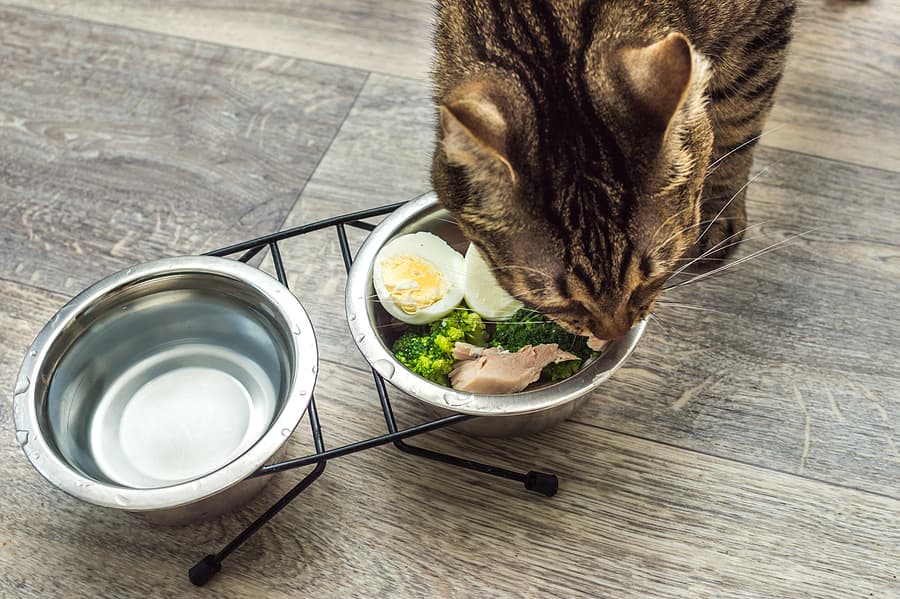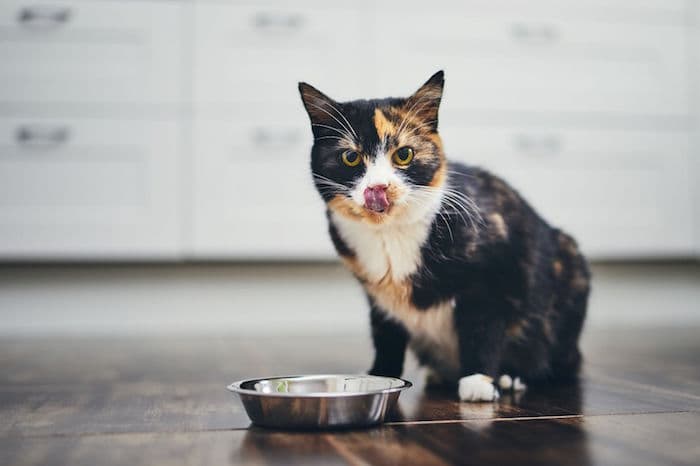If you have a picky feline friend who turns their nose up at every meal you serve, don’t worry, you’re not alone! Many cat owners face this challenge as cats are finicky by nature, and cat parents buy different types of food to find the one their cat truly enjoys. In recent years, raw cat food has gained popularity as they mimic the type of food cats would have eaten in the wild.
Although many cats get excited to eat raw food, some picky eaters may take longer to adjust to a new recipe. But the good news is it’s not impossible to introduce raw food to your furry friend, no matter how picky they are. Consider the following tips to introduce raw food to your cat.

Consult Your Veterinarian
Before making any changes to your cat’s diet, it’s important to consult your veterinarian. They can evaluate your cat’s health, discuss the benefits and risks of raw feeding, and provide specific recommendations tailored to your cat’s needs.
Once they give you the green light, start looking for a reputable brand that offers raw cat food. Browse their list of products to choose recipes that your furry friend may enjoy. If your cat has a specific dietary condition or health issue, you may have to choose a simple recipe with minimal ingredients that best suits their health.
Gradual Transition
Cats can be creatures of habit, and sudden changes in their diet may cause digestive upset. Mix a small amount of raw food with your cat’s diet. Gradually increase the proportion of raw food over a week or two until your cat is solely on the raw diet. Monitor your cat’s response and adjust the transition speed accordingly, keeping an eye out for any signs of discomfort or digestive upset.
Experiment with Different Proteins
Just like humans, cats have their preferences when it comes to food. Try offering a variety of proteins when switching your cat to raw food, such as chicken, turkey, beef, or fish, to see what your cat prefers. Choose a reputable brand that offers a wide variety of recipes to ensure you have access to different types of protein sources. When experimenting with various proteins, you may notice that your cat prefers one type, or they may enjoy a mix.

Temperature Matters
Cats tend to prefer their food at a slightly warm temperature, similar to freshly caught prey. A study found that aging cats prefer food served at 37 degrees Celsius. Before serving raw food, warm it up slightly to enhance its aroma and appeal. However, avoid overheating or cooking the food, which can destroy valuable nutrients.
Presentation and Texture
Cats are instinctual hunters, and appealingly presenting their food can make a difference. Consider cutting the meat into small, bite-sized pieces or grinding it to a consistency your cat finds appealing. Some cats may prefer chunks, while others may prefer a smoother texture.
Patience is Key
Changing your cat’s diet won’t necessarily be a one-and-done task, and it may take some time. Be patient and persistent. If your cat initially rejects the raw food, try offering it again after a short period or mix it with a small amount of their favorite treat to entice them.
Introducing raw cat food to a picky eater can be a rewarding experience for you and your feline companion. It’s essential to approach the transition with patience, guidance from your veterinarian, and an understanding of your cat’s preferences. With time, your picky eater may discover the joy of a raw, natural diet, promoting their overall well-being and satisfaction.
